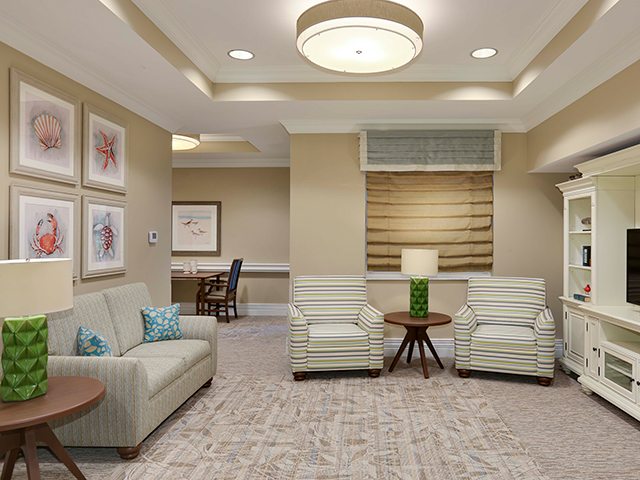Memory care is one of the fastest growing segments in Senior Living. According to the Alzheimer’s Association’s statistics, increasing age is the greatest risk factor for the disease, doubling every five years after age 65. In memory care, furniture sets the standard that provides a sense of home and familiarity without sacrificing a sense of style. Don’t confuse homey with homely as the look of a memory care should create a calming, comforting environment.

What is memory care design
What is memory care design? Memory care design is dementia friendly design that is livable and free of clutter. It is a clean design that supports individuals with dementia and allows them to be comfortable in their environment. A wing back chair with gently rounded edges protects delicate skin. Bariatric furniture can safely support a generous seat size. Smooth rocking motion offers soothing comfort with rockers, gliders and motion chairs. Design that is visually pleasing, tactile and triggers good memories can help calm residents and reduce wandering.

Caring for Seniors with Dementia
Caring for seniors with Dementia can be challenging. Some important guidelines can be used when designing residential care with those afflicted. The importance of the use of contrast in Memory Care environments cannot be overstated. While visual sensory losses are typical as we grow older, individuals living with dementias realize this loss to a greater extent. Dual toned casegoods, gives the resident a visual boost and helps determine the furniture edges and the center of drawers where the handles are located. Using oversized hardware is not only easy to see, but also easy to grasp and manipulate.

Designing memory care environments
When considering design for memory care environments architects should take into consideration dedicated care spaces within Memory Care “neighborhoods.” These include common spaces for group activities, dining and therapy areas, all of which encourage individuals to leave their apartments and socialize with other residents. With supervision residents can prepare their favorite recipes. Cooking meals in view can help with cueing before and during the meal and help keep Sundown Syndrome residents occupied during a typically restless time period.

